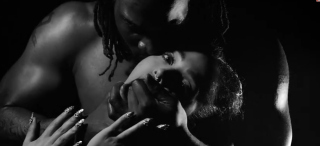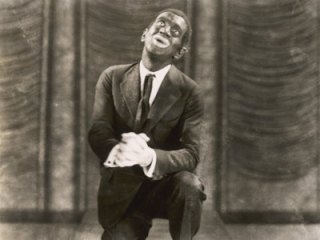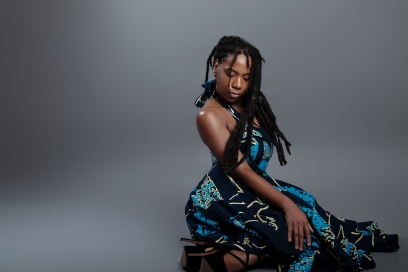NIGGERS BE HOLDING THEM DICKS TOO, JACK. AND WHITE PEOPLE GO, “WHY (DO) YOU GUYS HOLD YOUR THINGS?” SAY YOU DONE TOOK EVERYTHING ELSE, MOTHERFUCKER. . . NIGGER BE CHECKING!
Spin.com 50 Best Albums of 2015
38. FKA twigs
M3LL155X EP
“I’ll make my own damn way,” FKA twigs, born Tahliah Barnett, purrs on the closing track to last year’s luscious, ominous LP1. She’s always done so, ever since the queasy slow-motion seduction in the video for 2013’s “Papi Pacify” flexed on interracial sexual dynamics, but she slashes and burns a whole new path on M3LL155X. (…). — HARLEY BROW
This brief review of FKA twigs’ brilliant new EP is offensive to me, quite pointedly because I feel the author’s provocative pronouncement of Papi Pacify’s “interracial sexual dynamics” insultingly belittles and erases FKATwigs’ own Blackness. By suggesting the video depicts “interracial” sex, it reinforces threatening—to the ever-lynchable Black male martyr, not the traditionally treasured white woman—stereotypes of the brutal Black ape-like savage beast, akin to a blackfaced caricature on D.W. Griffith’s horrifying Ku Klux Klan-worshipping Birth of a Nation. Also by suggesting FKA Twigs’ whiteness in the statement of ‘interracial” sex, the author of the article belittles Tahliah’s own power as a Black woman making her own art—very controversial, very visceral, very raw, and very, very psycho-sexually transforming.
One of the things I love most about FKATwigs is precisely her Blackness. Brilliantly subverted by her extremely fair skin tone, it is nonetheless legitimate. In fact, FKATwigs is mixed race in a unique way—unlike many mixed race in the West, neither of her parents are “white.” Her mother Spanish, and her father Jamaican, Tahliah Debrett Barnett has never sugarcoated her isolation and dual consciousness as the only mixed race in her town, in her school. Her Image celebrates her identity in the fact that she asserts her autonomy and owns her multicultural identity through her deliberate musical and stylistic choices, including, very pointedly and poignantly her vogue-and-hip-hop-centric dance style. As she whispers in “Figure 8”: “Boys growing boys growing girls into women,” her evocation and channeling of Black gay males’ vogueing is defiantly in itself a deconstruction and reconstruction of her classical [read: Eurocentric], and classically feminine, ballet training. In fact, perhaps what makes her the most interesting is the embodiment of her juxtaposition of seeming polar extremes; black, white, new world, old world, third world, ancient world, English, European, London, new York, little girl, crone, doll face, serpent, submissive, witch….ultimately, FKA Twigs is simply one hell of a shapeshifter and all meticulous Craft, no pretension.


The prominence of quite masculine, often very dark skinned Black men in her work shows a juxtaposition of the Black male policed rage with his repressed vulnerability—both often displaced and taken out on their women. In “Papi Pacify”, she speaks as a fully aware woman willingly surrendering her power, a woman who knows, without naivete, a certain level of unavailability in her partner—“tell me you’re the one to fix it all/ even if you won’t” she smirks, reminding me of the serpentine succubus she is, the Siren pacifying, indeed, the very one that pacifys her.

Just as every woman has been taught that, biologically and psychologically, boys develop later than girls, she knows in her feminine sovereignty he can never add up to the totality of her nor meet all of her needs (aka “fix it all”) but she indulges his attempt, his effort, even his lies (as men lie and promise the world to bed the right seductress). In “Ache”, however, the dominatrix-like tease seems to acquiesce to a different aspect of femininity: an empathetic, sensitive nurturer. The video in particular is quite evocative, and all the more beautiful in its contradicting contrasts.
In Ache, the simple video centers around the solo performance of a dark skinned Black Krump dancer. He is traditionally “masculine” in posture and costume and, all the more threateningly or ominously, masked in a way that evokes a muzzle or a bondage-type of gag-mask. In other words, the man dances the frustration of the Black man’s silence.

The Black man is continually undermined by his own inability to articulate—in the white man’s language—his own post traumatic slave discontent effectively within the confines of Western discourse, Eurocentric psychology, and Judeo-Christianity-based philosophy. The krumping seems violent, agonized, yet his face—most importantly the bottom half of his face containing his mouth—is obscured. Grotesquely, the mask itself reflects to the viewer a hostility that the silenced—muzzled—mouth and the masked face itself is frustrated trying to justify itself against. In other words, while the mask reflects rage or elicits a threatened sense of fear, the mask itself is what muzzles and emasculates the Black man. To put it simply and finally, the mask he wears is the masked “double consciousness” of assimilation in a Eurocentric white-majority Western society. This “double consciousness” is what silences his true self—ironically by his own self-conscious awareness of his “other” self precisely as an Other.




In the way Blacks in the post-slavery Diaspora have an unspoken, automatic ability to “switch” from Black English vernacular to Standard “white people” English is a testament to the inherent power of the programming. The ways Blacks in the UK as well as the Americas consciously contend with themselves as an active, walking and talking “alien” in their own country of birth is a bipolar type of phenomena eloquently critiqued in Frantz Fanon’s Wretched of the Earth and White Skin, Black Masks, as well as the works Toni Morrison’s Playing In The Dark, Ishmael Reed’s Mumbo Jumbo and The Signifying Monkey, and Ralph Ellison’s Invisible Man, among a plethora of other classic and contemporary examples. Dual consciousness is also alluded to in feminist critique as a sense of “doubly” identifying oneself as a woman in a “male” world, having to constantly view oneself and one’s sisters through the Male Gaze as well as one’s own. FKATwigs traverses many territories in a multiconsciousness of andgrogynous, ambiguous, Dom/Sub switch, queer-friendly, white/black. In Ache, she sings to her lover(s)—most pointedlythe Black man—“I ache for you”, to remind him and all of Black masculinity that we, Black Women, do care for and ache for our (Black and otherwise) male lovers, and feel the burden and hardness of their rage and forced machismo. Every tear they are told not to cry—“don’t grow up to be a sissy” is often heard in a largely homophobic Black community—is exorcised in the krumping dance and, for all its aggression, it is emphasized by the softness of Twigs’ angelic murmur.
On the same Ep1, in the song “ Breathe” she asserts “teach me your ways of submission/my body’s itchin to press on the bruises you hide with a smile” as she cunningly, and culling, invites him to surrender and release the burden of his façade of masculinity unto her. This is also important considering Twigs’ love for the homosexual Black male community—especially in vogue ball culture where contestants are awarded for their best display of “butch” or, in other words, who can “act” hardcore masculine enough or, more chillingly, who can “pass” well enough for survival. The concept of passing seems to be less relevant especially in the post-Janet Mock era, however, especially in the vogue culture as it was birthed in the Paris Is Burning era, passing was often vital to literal survival of life and limb. When gay males were being murdered for being gay, period—let alone today’s rates of transgender murders—passing as “butch” or hypermasculine was often a defense mechanism for those still in the closet.
The krump dancer in “Ache” seems likely ‘heterosexual”, very masculine, even threateningly so. He is a “stereotypical” urban “Black Man” with the large jacket—remember it was merely a hooded jacket that got a baby-faced Trayvon Martin brutally shot down—that, in today’s police brutality era, could easily be a target of murder, guilty by “racial profiling” association. However, his vulnerability is in his masked dance, reminiscent of the “dancing Negro” dolls or the vintage 1940s racist cartoons depicting smiling Blacks dancing, their feet being shot at by laughing, gun toting racists. Ache’s krump dancer is beauty in motion, channeling the rage of millions of murdered and enslaved Africans, victimized and disenfranchised African Americans systematically and experimentally “dumbed down” and sterilized. Interestingly enough, for such a fast-paced energetic and frenetic dance, the krumping in Twigs’ piece is precisely slowed down to emphasise the beauty of what could be stereotypically interpreted as threatening. Here, the effect of slowing the krumping down, is similar to the order of white Brazilian slavemasters who prohibited the practice of capoeria among Brazilian slaves. Capoeria, an African martial arts system was stylized as a dance, slowed down like the krump dancer in Twigs’ video, slowed down to show the beauty in the rage of resistance (akin to the beauty of resistance in the Kinbaku Shibari featured in Twigs’ MOBO award-winning “Pendulum”) and revolution.

“Makes me wanna holler/ the way they do my life…”
–Marvin Gaye
**”Cocaine (Pimps)” by painter Glenn Ligon
….to be continued….
Copyright 2015 Gloria Steele-Hatten

“I Ache for you:” FKA Twigs and Loving the Black Masculine, pt 1 by Gloria Steele-Hatten is licensed under a Creative Commons Attribution-NonCommercial-NoDerivatives 4.0 International License.












